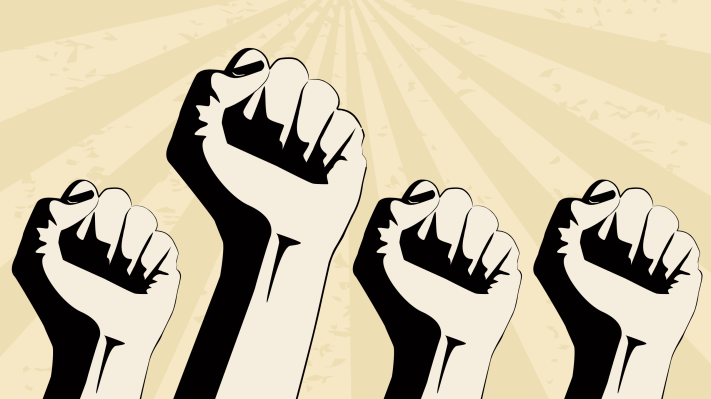The VC industry has come under scrutiny recently as several stories of sexual harassment and inappropriate behavior toward women have emerged.
This behavior is unacceptable in every possible way. However, to truly address this problem, we have to acknowledge the larger issue of gender bias within our culture, which unfortunately is often conscious, deliberate, and systematic. It sickens me and it needs to end. And ending it also needs a conscious, deliberate, and systematic effort.
While I applaud some early efforts to address this issue (including Reid Hoffman’s decency pledge), we can do better. Our goal shouldn’t be to simply prevent creeps from unfairly using the power imbalance between founders and investors.

Over 400 thousand protestors participated in the NYC Women’s March on Jan. 21, 2017 in resistance to US President Donald Trump. (Photo: Brit Worgan/Getty Images)
We need to honestly reflect upon what we know empirically to be true about our industry – we lack women investors, we don’t invest enough in women entrepreneurs, and within our portfolios, specifically for technology companies, we have a problem when it comes to hiring, promoting, and paying women equally.
The decency pledge is a bare minimum; it equates to being the tallest bonsai, and in the land of Redwoods, that’s not enough. We should be pledging to stand tall and create a supportive and equal environment for women.
As a venture community we have the opportunity and, in fact, the obligation to be better. As leaders we need to be introspective and to always be evolving. As the group funding the next round of companies, we need to be conscious of how we lead and what message we’re sending to the next generation of workers.
We have to be deliberate and systematic in our effort to CHANGE how things are today. We all want to be better in everything we are doing – and addressing the gender imbalance should be no different.
And to that point, you should be able to ask ANY VC what they are doing about it, and they should have an answer. Because we KNOW this is a problem, and if you aren’t trying to correct it, then you are conscious in your decision to leave things as they are.

View of signs left on the ground after the Women’s March on Washington, Washington DC, January 21, 2017. (Photo by Barbara Alper/Getty Images)
There isn’t one answer to how to solve this. So rather than say you need to hire a woman, or invest in a female founder, which you should do, but might take some time…I would like to suggest something that you can do today.
- As GPs and Managing Directors, you need to start the conversation. Put it on the next team meeting agenda and make sure it happens. Just like at portfolio companies, change needs to start at the top. The firm’s leadership need to be bought in. Make finding gender balance within your teams, deal flow, and portfolio a priority and it will happen – don’t leave this as a side project.
- Watch Google’s Unconscious Bias @ Work as a team (it’s worth spending some time on the site in general). There are several important takeaways, but for me the following two resonate: you have to create the opportunity to safely call people out on bias and you need to be measuring something you want to change. Addressing bias in colleagues can difficult. Bringing it to someone’s attention can create an uncomfortable dynamic, but if you’re committed as a team to consciously trying to identify and correct the issue, it can make the conversation much easier.
- With regard to measurement, tracking dealflow is the first step. I recommend retroactively going back through your deal flow and measuring the percentage of deals you’ve had with women founders or co-founders. This is an easy metric to immediately influence if you wanted. For example, Crunchbase let’s you filter companies by founders with women. The next step is to set goals and hold yourself accountable.
- When you have a woman entrepreneur pitching, remind the team of the potential for unconscious bias to enter the conversation – the Google video has some great studies within it and there are new studies all the time that can be applied to VC. The most recent Harvard Business Review article is directly applicable, and highlights how while pitching male entrepreneurs get asked promotion type questions while female entrepreneurs get asked prevention type questions. And this line of questioning shapes the impression of the opportunity. Review your notes and questions and look for unconscious bias. Make sure there are a few standard promotion questions that you ask every entrepreneur so that you get a comparable picture.
- If raising the bias conversation isn’t happening naturally, designate a team member to play that role in team debriefs, even rotating that person. Similar to the concept of a designated devil’s advocate, this can help ease the transition to making these conversations part of the everyday dialogue.
For those looking for other ideas on what they can do to proactively address this problem, I find that the work of Project Include, LeanIn.org, and Adam Grant all provide good starting points. As a community, I hope we can put these resources and actions into place — when it comes to gender bias, we can stand taller and we can do better!
